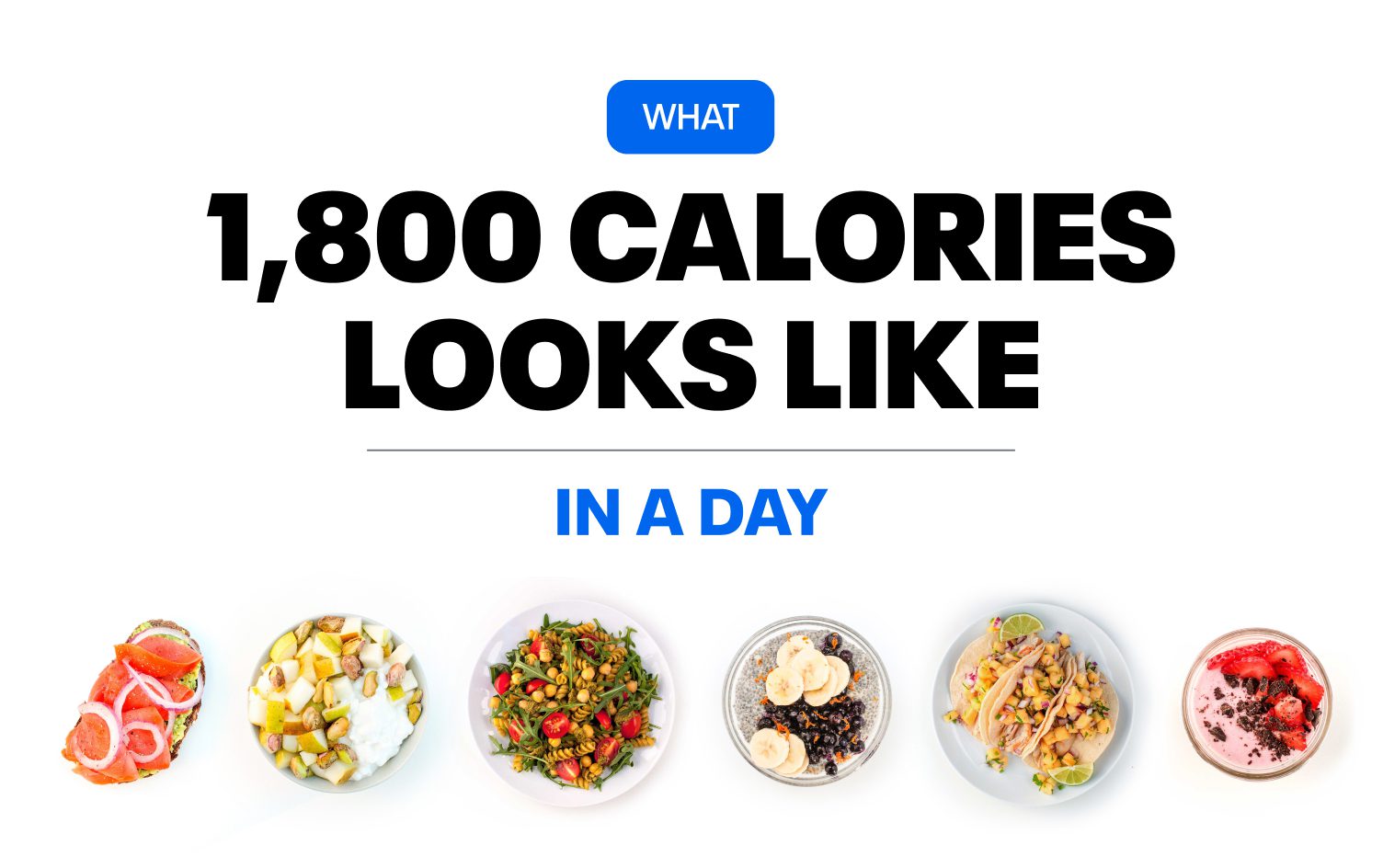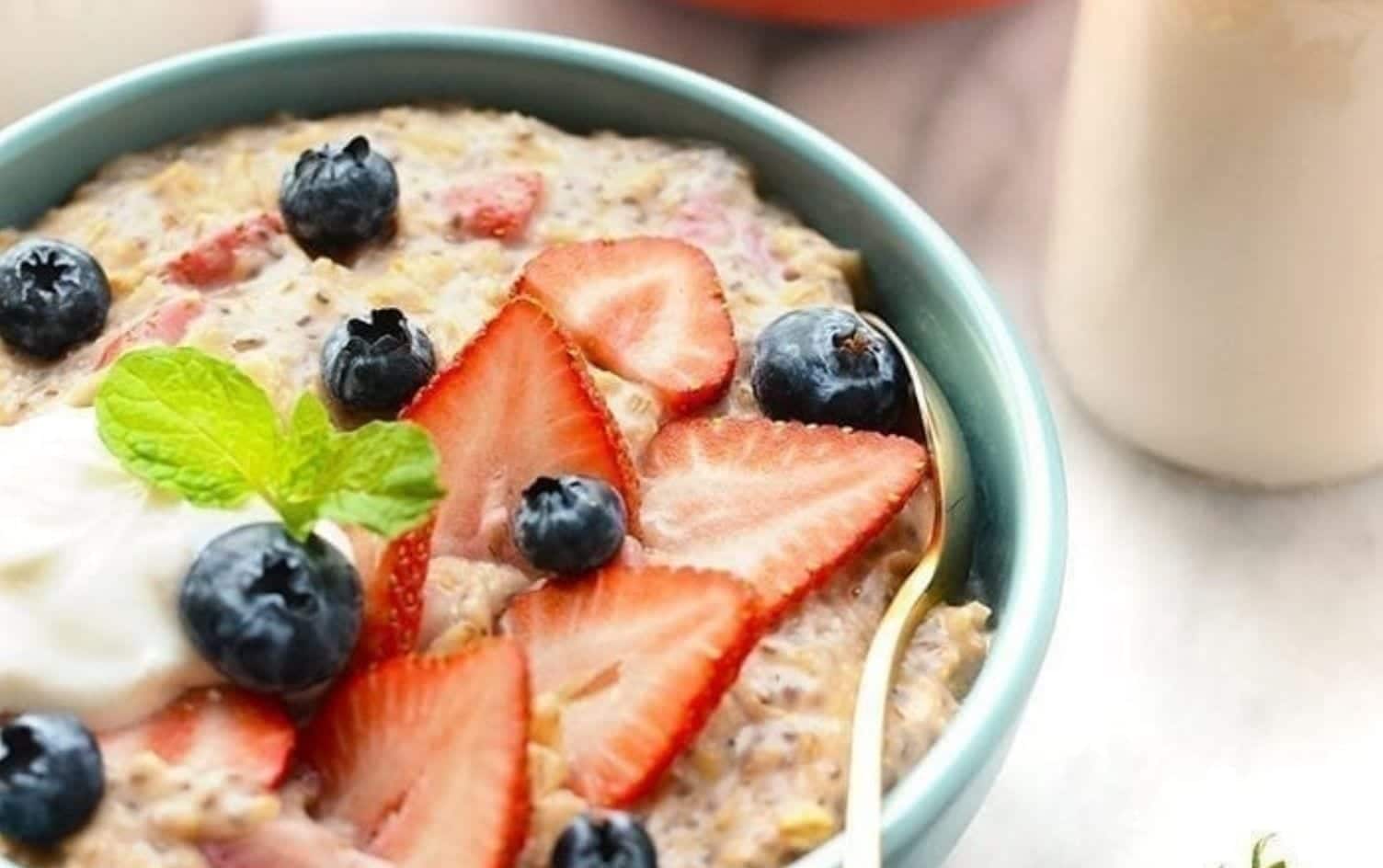Eating well isn’t just about counting calories. It’s about making every calorie count. If you want to lose weight, maintain your weight, or just adopt a healthier lifestyle, understanding what a well-balanced 1,800-calorie meal plan looks like may be your ticket to success.
Tailoring your meal plan to provide the right nutrients and energy levels helps you meet your health goals and enjoy sustainable weight loss.
Keep reading to see what an easy 1,800-calorie meal plan looks like, including detailed options for every meal and practical, weight-loss-friendly meal planning tips.
Can You Lose Weight by Eating 1,800 Calories a Day?
The answer is most likely yes — especially if your 1,800-calories-a-day diet puts you in a calorie deficit (the number of calories you burn is higher than the number you take in).*
A 1,800-calorie plan can work wonders for many people, but the key is making sure those calories come from nutrient-dense foods.
Nutrient-dense foods and beverages “provide vitamins, minerals, and other health-promoting components and have little added sugars, saturated fat, and sodium. Vegetables, fruits, whole grains, seafood, eggs, beans, peas, and lentils, unsalted nuts and seeds, fat-free and low-fat dairy products, and lean meats and poultry—when prepared with no or little added sugars, saturated fat, and sodium—are nutrient-dense foods.”
This approach to eating can provide the energy you need for your daily activities while supporting your weight loss goals in a healthy manner.
Remember, weight loss is a marathon, not a sprint. It’s the small, consistent changes you make to your diet and lifestyle that have the most long-term impact.
*Note: Before you start a new diet, especially one as specific as a calorie-restricted meal plan, it’s wise to consult with a healthcare professional or registered dietitian who can personalize 1,800-calorie diet menus that meet your nutritional needs, fitness level, and weight management goals.
ALSO READ > What 2,000 Calories Looks Like
What 1,800 Calories Looks Like

If you’re on a calorie-deficit meal plan, you need to pay attention to portion sizes and the balance of food groups. You need to consider the nutrients you consume, not just the calories.
Below are three examples of what an approximately 1,800-calorie day could look like.
1,750 Calories Example:
- Breakfast: 1 cup plain Greek yogurt with 1/2 cup mixed berries, 1/4 cup granola, and a drizzle of honey
- Morning snack: A smoothie with 1 scoop of protein powder, 1 small orange, 1 cup of spinach, and 1 cup of almond milk
- Lunch: Quinoa salad with 1 cup cooked quinoa, 1/2 cup chopped vegetables, 1 oz pine nuts, 1 oz feta cheese, and 2 tablespoons of Italian dressing
- Afternoon snack: 10 baby carrots and 1/2 a red bell pepper with 4 tablespoons of hummus
- Dinner: 6 oz grilled lemon garlic shrimp with 1 cup kale sauteed in olive oil and garlic, 1/2 cup roasted cubed sweet potatoes, and a cucumber side salad with 1/2 English cucumber, a splash of red wine vinegar, a sprinkle of salt, and fresh dill
1,775 Calories Example:
- Breakfast: 2 eggs scrambled in butter with 1 cup of cooked spinach and 2 slices of whole-wheat toast
- Morning snack: 1 small apple with 2 tablespoons of almond butter and 1 hard-boiled egg
- Lunch: A whole wheat tortilla with 4 oz grilled chicken, 2 tablespoons hummus, 2 oz roasted red peppers, and 1/2 cup mixed greens
- Afternoon snack: 1 cup of grapes with 1/4 cup of cottage cheese
- Dinner: 6 oz baked salmon with 1 cup steamed broccoli, 1/2 cup cooked quinoa, and a side salad with 1 cup mixed greens and 2 tablespoons balsamic vinaigrette
1,800 Calories Example:
- Breakfast: 1/2 cup cooked oatmeal with 1 medium banana and 1 cup English Breakfast tea
- Morning snack: 1 cheese stick with 5 whole-grain crackers and 1/4 cup fresh fruit
- Lunch: 2 slices of whole-grain bread with 4 oz turkey, 1/2 an avocado, and a smear of lite mayonnaise with a side of 1/2 cup of unsweetened applesauce
- Afternoon snack: 4 celery sticks with 2 tablespoons peanut butter and 1 oz raisins
- Dinner: 1 cup turkey chili with 4 saltine crackers and a side salad of 1 cup mixed greens, 4 cherry tomatoes, and 2 tablespoons lite ranch dressing
By designing your healthy meal plans with the help of these examples, you can ensure you’re getting a diverse range of nutrients and flavors that make you feel satisfied and energized throughout the day.
Healthy meal planning gives you a diverse range of nutrients and flavors so you feel satisfied and energized all day.
ALSO READ > What 1,500 Calories Looks Like
FAQs
Managing a calorie-specific diet can sometimes feel overwhelming, so here are some answers to commonly asked questions:
How many calories do I need?
The number of calories you need daily depends on several factors, including age, sex, weight, height, and activity level. The average range for moderately active adults is around 2,000 to 2,200 calories per day for women and 2,600 to 2,800 calories per day for men. Depending on where you fall in that range and what your goals are, 1800 calories may be appropriate and result in a steady, safe weight loss. Using our free Macro Calculator is a great way to determine what calorie level is correct for you.
Is 1,800 calories too low?
For some people, 1,800 calories can be too low, particularly if you’re pretty active. So, always consider your personal health circumstances when setting an appropriate calorie goal. In general, rapid weight loss isn’t sustainable and can lead to lost muscle mass, a slowed metabolism, and other health issues. When adding exercise to your routine make sure to account for the calories burned and adjust accordingly to fuel your body properly. Aim for a balanced approach that supports your energy needs and overall well-being.
Can I customize my 1,800-calorie meal plan?
Absolutely! The beauty of a 1,800-calorie meal plan is its flexibility. You can swap out certain meals and snacks to suit your preferences, dietary restrictions, and options. Just remember to maintain a balance between protein, carbohydrates, and healthy fats in each meal.
Meet Your Health Goals With a Balanced Diet
Adopting a daily 1,800-calorie meal plan might seem intimidating at first, but with a little preparation and creativity, you can enjoy a delicious variety of food groups while still staying within your caloric limits.
To design a meal plan that’s as healthy and effective as possible:
Start with a strong foundation
- Build your meals around lean proteins, like chicken breasts, turkey, fish, eggs, tofu, tuna in water, and legumes. Include a variety of vegetables at each meal, aiming for a rainbow of colors to maximize nutrient intake.
- Add whole grains and starchy vegetables for sustained energy. Choose sweet potatoes, brown rice, quinoa, whole wheat bread, oats and beans for added fiber and nutrients in place of refined carbs.
- Instead of just counting your calories, consider protein, fat, and carb servings, too. A carb serving is about 15 grams of carbohydrates, a protein serving is about seven grams of protein, and a fat serving is about four to five grams of fat. It’s recommended to have about 5 servings of protein, 2.5 servings of veggies, 1.5 of fruit, and 6 servings of carbs and grains per day.
- Bulk up your meals and snacks with low calorie, high fiber fruits and vegetables to help you feel and stay full longer while maximizing nutrient content.
Stay active and flexible
Activity levels are crucial when determining your daily caloric needs and overall health. Combining a healthy diet with regular exercise can boost your weight loss efforts and improve your all-around fitness.
- Aim for a mix of cardiovascular exercise, strength training, and flexibility work. This will help you to see the most benefits.
- Adapt your meal plan based on hunger and activity. You’re more likely to succeed if your meal planning fits your life, so experiment with different meals and find what works best.
- Remember that sticking to a strict calorie level is less important than fueling your body properly. You may need extra calories on days when you exercise more in order to properly recover and maintain lean muscle mass.
MyFitnessPal can help you track to meet your goals. With persistence, creativity, and MyFitnessPal, reaching your health goals with a 1,800-calorie meal plan is within reach!

Originally published April 2020; Updated April 4, 2024






